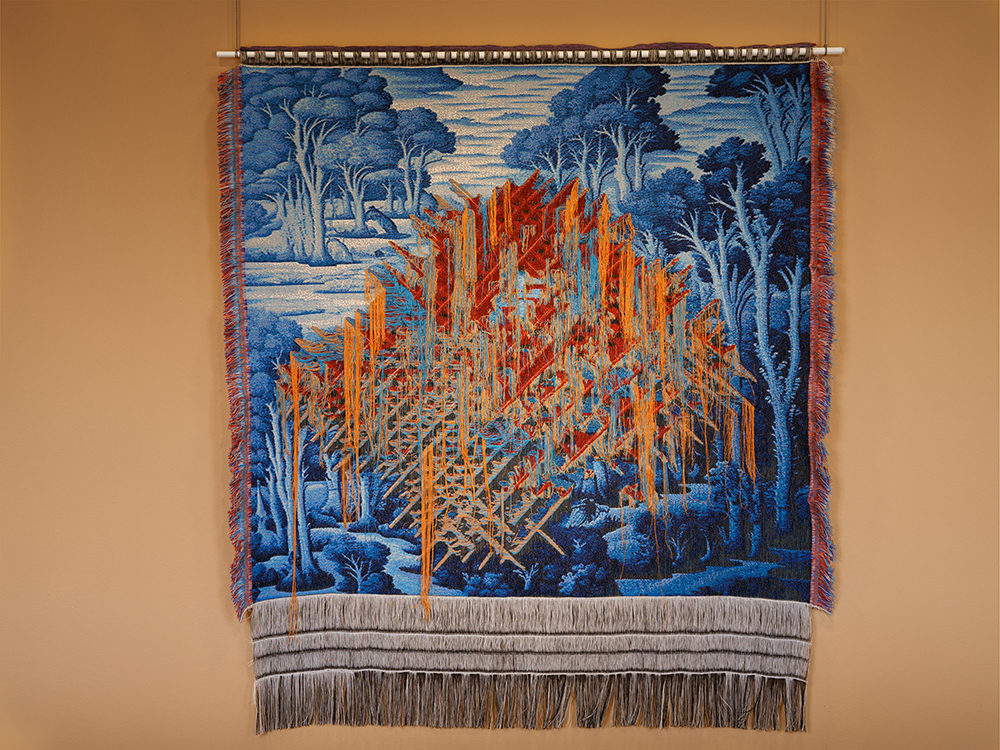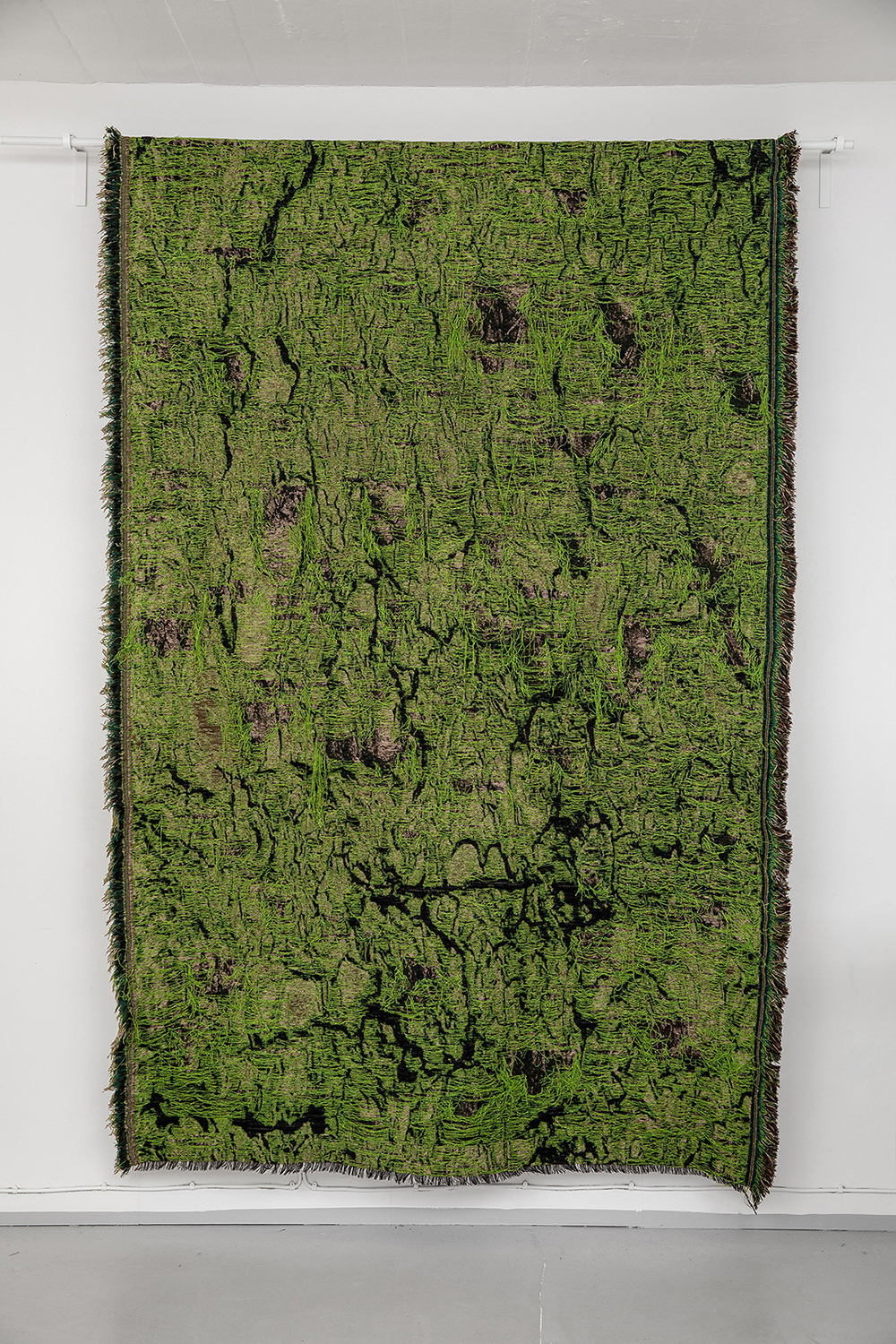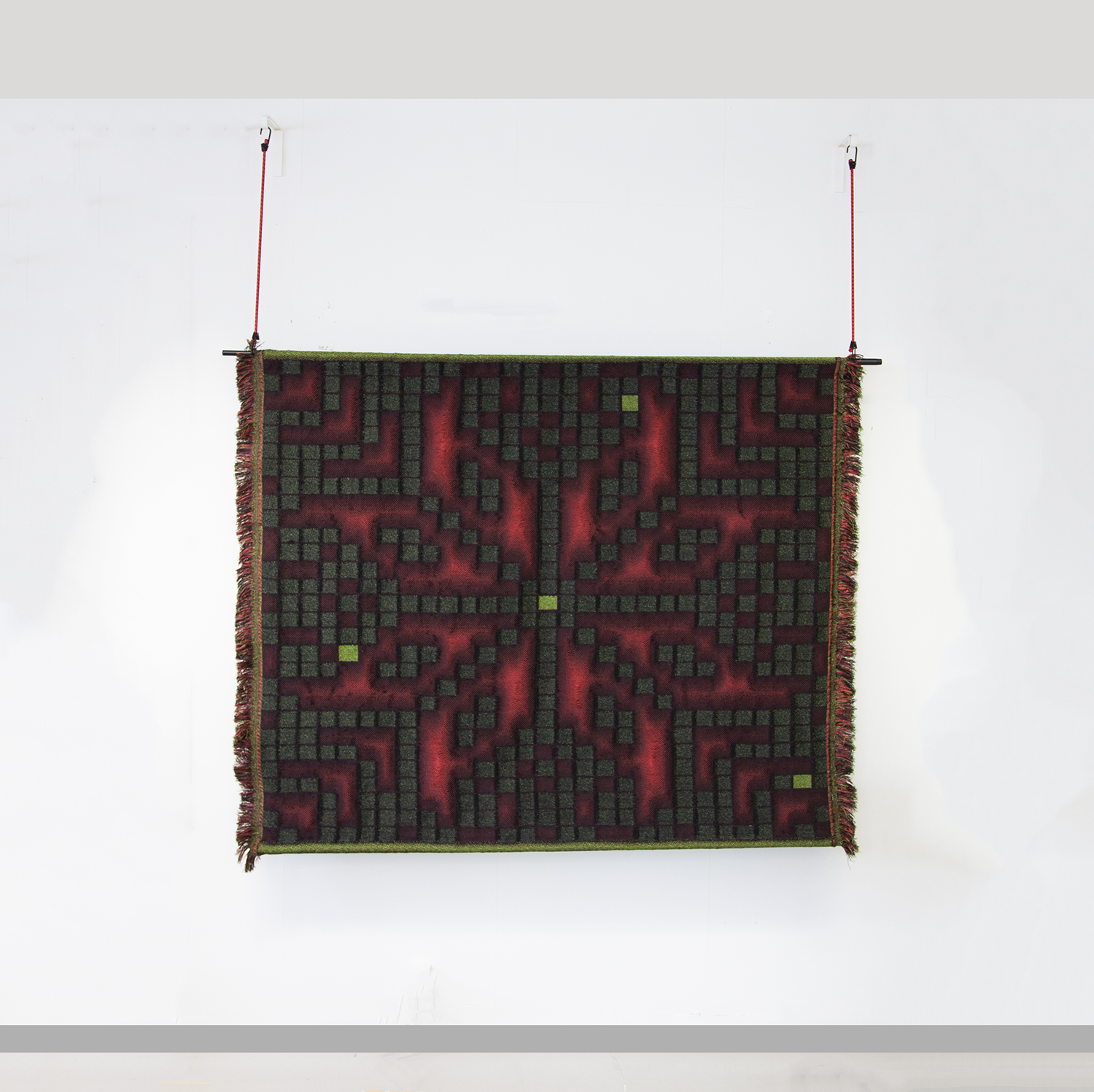Kristina Aas
Hybrid, 2023
Wool, viscose 152x140 cm
Hybrid II is a tapestry in which the varied colors and patterns evoke visual and textural contrasts. The landscapes and symbols derive from 16th-century Gobelin tapestreis depicting apocalyptic battles between good and evil. This work is apart of the series of tapestries in which the artist examines reltionship between digital and traditional weaving.
Kristina Aas
Bark, 2020
Wool, polyester, viscose 150x240 cm
I often find inspiration in the forest: nowhere else do you see such a great variety of textures and contrasts: tree trunks, moss, bark, grass, stone, and earth. The soft surface meets the hard, dark light; textures are intertwined, repeated in an infinite pattern, only broken up by a broken branch or a mushroom hat sticking out. The fascinating thing is the tree's bark: some spots are like cracked skin or dried clay, and in some places, it is thin and smooth, glistening in the light, here and there, covered with moss or eaten up by beetles. Magnified, it is reminiscent of a landscape, an unknown map of valleys, mountains, rivers, and lakes.
Kristina Aas
The Game of Life, 2023
Wool, viscose, polyester 135x165 cm
The Game of Life, also known simply as Life, is a cellular automaton devised by the mathematician John Conway in 1970. It is a zero-player game, meaning that its evolution is determined by its initial state and does not require further input. The pixels, or squares, in this textile work, are not filled following these rules; the pattern is made on a square grid manually, consciously creating the eight-pointed star, so typical in many cultures and found in textile designs all over the World. Our ancestors did not know anything about computers or rules, and still, they used a grid in which they ”engraved” their symbols, assigning meaning to them and following special rules. The main idea was to explain the World to themselves and find the purpose of their existence; the second was for decoration or, for example, protection of their homes. I find it fascinating that similar patterns can be evoked by simple algorithms following logical rules.


